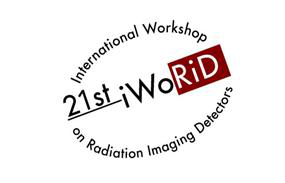The attention on the application of organic electronics for the detection of ionizing radiation is rapidly growing among the international scientific community, due to the great potential of the organic technology to envisage the need of large-area conformable sensor flat panels.
In recent years, our group reported about the employment of solution-grown organic devices as reliable direct...
Modern Free Electron Laser (FEL) facilities produce X-ray light pulses at MHz
repetition rates. The LCLS-II accelerator, which is currently under
commissioning, will operate at a continuous rate of 1 MHz with X-ray energies
between 250 eV and 5 keV. Experiments conducted at LCLS-II will require
detectors with a unique set of features, such as high-spatial resolution, low-noise
performance...
The gamma or hard X-ray imaging systems are often used in various application fields such as: medical imaging (radiography, tomography, scintigraphy, SPECT, PET), non-destructive testing, environment protection (nuclear waste storage, radiation monitoring), back-scatter imaging etc. The common effort in all these applications is oriented towards a maximal reduction of radiation dose preserving...
Abstract: Timepix3 [1] detectors are hybrid pixel detectors developed within the Medipix3 collaboration. Their sensitive layer is divided into a square matrix of 256 x 256 pixel at a pixel pitch of 55 µm. They offer a data-driven readout scheme and can simultaneously measure the Time-of-Arrival (1.5625 ns binning) and the Time-over-Threshold in each pixel. Silicon is the most commonly used...
The Compton camera concept is based on reconstruction of recorded Compton scattering events of incoming gamma rays. Usually, two or more detectors (layers) are used for constructing the Compton camera. The scattering of primary gamma ray occurs in the first detector (called scattering detector – usually thin) recording position and energy of recoiled electron. The scattered gamma quantum...
